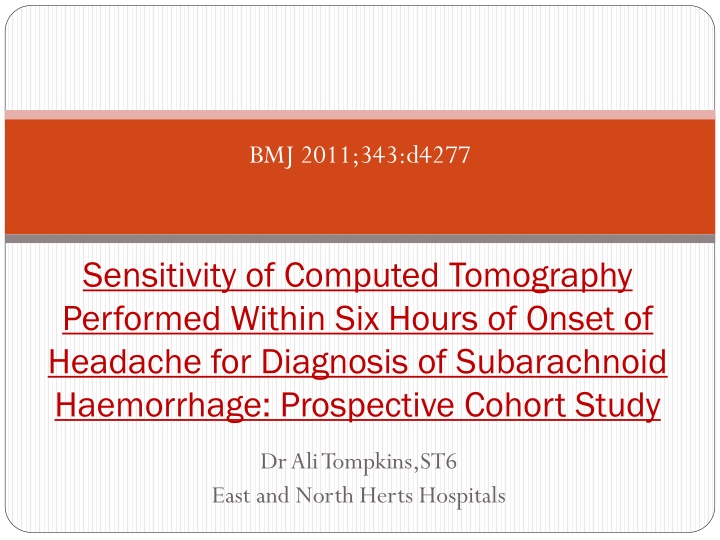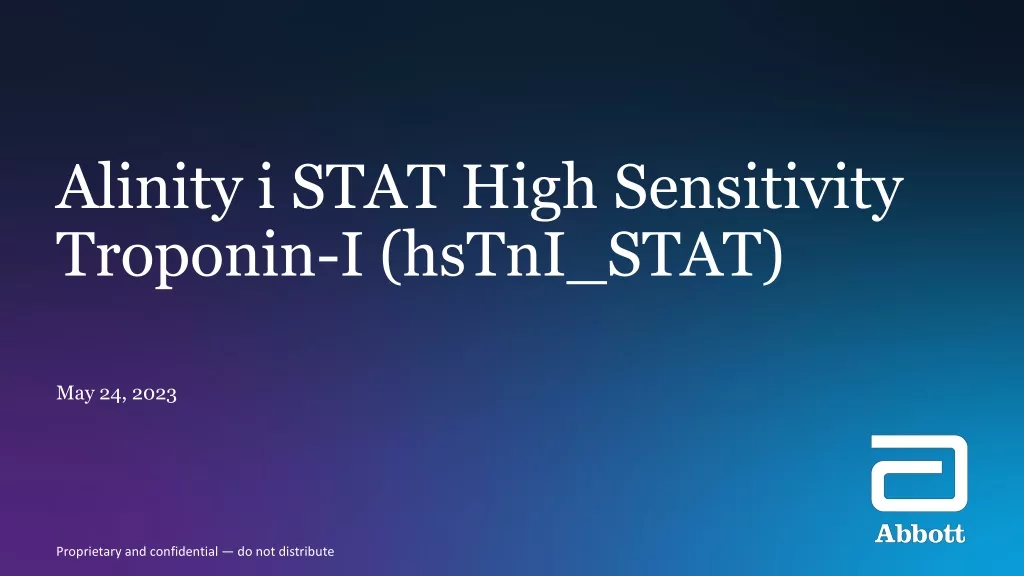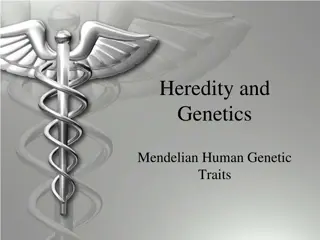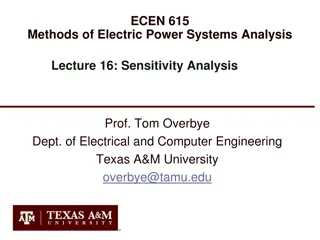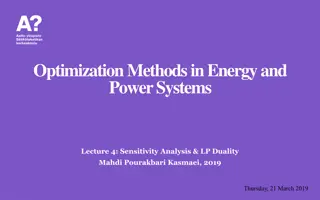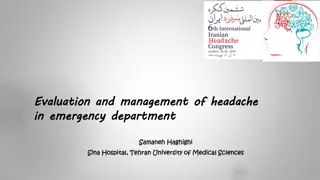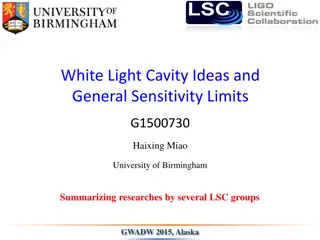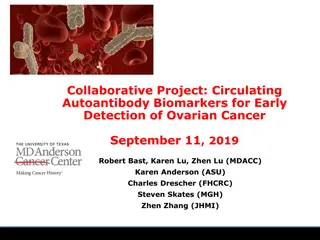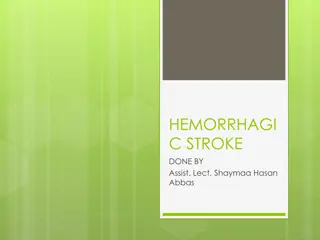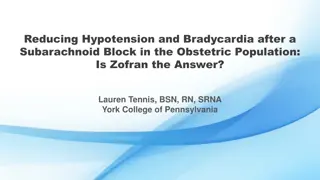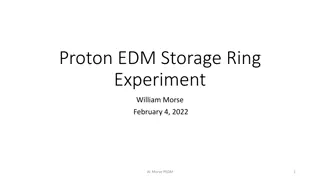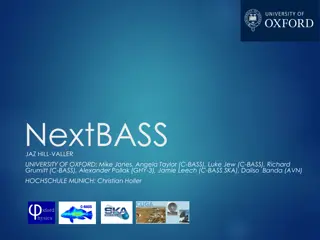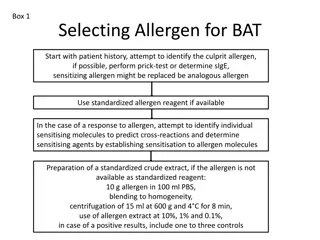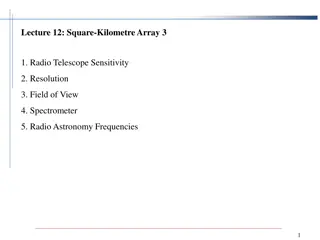Sensitivity of Early CT in Diagnosing Subarachnoid Haemorrhage
This prospective cohort study aimed to assess the sensitivity of early computed tomography (CT) in identifying subarachnoid haemorrhage (SAH) in patients with acute headache. Over 9 years, 5424 patients were evaluated, with 240 (7.7%) confirmed to have SAH. Sensitivity of CT within 6 hours of headache onset was 100%, with a high negative predictive value of 99.4%. This study highlights the importance of timely CT imaging for accurate SAH diagnosis in neurologically intact patients with acute headache.
Download Presentation

Please find below an Image/Link to download the presentation.
The content on the website is provided AS IS for your information and personal use only. It may not be sold, licensed, or shared on other websites without obtaining consent from the author.If you encounter any issues during the download, it is possible that the publisher has removed the file from their server.
You are allowed to download the files provided on this website for personal or commercial use, subject to the condition that they are used lawfully. All files are the property of their respective owners.
The content on the website is provided AS IS for your information and personal use only. It may not be sold, licensed, or shared on other websites without obtaining consent from the author.
E N D
Presentation Transcript
BMJ 2011;343:d4277 Sensitivity of Computed Tomography Performed Within Six Hours of Onset of Headache for Diagnosis of Subarachnoid Haemorrhage: Prospective Cohort Study Dr Ali Tompkins,ST6 East and North Herts Hospitals
1. Summarise this paper in no more than 200 words (7) 1. Summarise this paper in no more than 200 words (7) TODSPICORC Title Objectives Design Setting Participants/population Intervention or Index test Comparison or Reference test Outcome Results Conclusion
1. Summarise this paper in no more than 200 words (7) 1. Summarise this paper in no more than 200 words (7) Objectives: To determine the sensitivity of modern computed tomography for identifying subarachnoid haemorrhage in neurologically intact patients with acute headache especially when scans are performed within 6 hours. Design: Prospective cohort study over 9 years.
1. Summarise this paper in no more than 200 words (7) 1. Summarise this paper in no more than 200 words (7) Setting: Multi-centre: Emergency departments of 11 university- affiliated tertiary care teaching hospitals in Canada Population: Patients >15years GCS 15 Non-traumatic acute (reaching maximal severity <1 hour) headache Undergoing CT head
1. Summarise this paper in no more than 200 words (7) 1. Summarise this paper in no more than 200 words (7) Index test CT <6 hours Reference test Composite of CT/LP/follow-up Outcome Subarachnoid blood on CT OR Xanthochromia at lumbar puncture OR Red cells in the final CSF sample with abnormal cerebral angiography CT report by neuroradiologist or general radiologist regularly reporting CT head LP: according to local protocol and at discretion of treating physician
1. Summarise this paper in no more than 200 words (7) 1. Summarise this paper in no more than 200 words (7) Results: 5424 eligible patients 240 (7.7%) confirmed SAH 3132 patients enrolled 49.4% underwent LP after ve CT Overall: Sensitivity 92.9% (95% CI 89% - 95.5%) NPV 99.4% (95% CI 99.1-99.6%) Specificity 100% (95% CI 99.9-100%) PPV 100% (95% CI 98.3%-100%) CT <6 hours (953 patients) Sensitivity 100% (95% CI 97% - 100%) Specificity 100% (95% CI 99.5-100%) NPV 100% (95% CI 99.5-100%) PPV 100% (95% CI 96.9%-100%)
1. Summarise this paper in no more than 200 words (7) 1. Summarise this paper in no more than 200 words (7) Results (continued) 17 false-negative CT (8 hours-8 days post headache onset) 13 SAH identified by xanthochromia 2 identified by RBC in CSF and abnormal angiography 1 identified on return to ED with repeat positive CT 1 aneurysm identified on CT (bled whilst awaiting surgery) 3 missed SAH on CT by EPs and one by both EP and trainee radiologist Conclusions: If interpreted by an experienced radiologist, modern multi-row detector third generation computed tomography within six hours is highly sensitive for subarachnoid haemorrhage.
2(a). Draw a 2x2 contingency table for 2(a). Draw a 2x2 contingency table for all all patients (2) patients (2) SAH +ve -ve +ve 223 0 223 CT -ve 17 2892 2909 240 2892 3132 2(b). Comment on the number of false positive CTs (1) 2(b). Comment on the number of false positive CTs (1) If CT was read as positive for subarachnoid blood no further confirmatory testing was undertaken therefore according to design the study was always going to have 0 false positives.
3(a). A patient is about to have a CT to investigate their 3(a). A patient is about to have a CT to investigate their acute acute- -onset headache that started 8 hours ago. They onset headache that started 8 hours ago. They ask you how good CT is at picking up the bleed that you ask you how good CT is at picking up the bleed that you are worried about. Explain what you would tell the are worried about. Explain what you would tell the patient (2) patient (2) Sensitivity of CT after 6 hours is only 85.7% (95%CI 78.3-90.9%) therefore 15 in every 100 patients with a subarachnoid haemorrhage will have a normal CT. Further testing will be needed if the CT is normal and this is in the form of a lumbar puncture.
3(b). A patient with an acute onset headache has a negative 3(b). A patient with an acute onset headache has a negative CT scan at 4 hours. What is the probability that they have a CT scan at 4 hours. What is the probability that they have a subarachnoid haemorrhage? (3) subarachnoid haemorrhage? (3) The negative predictive value of a CT <6 hours that is negative for SAH is 100% therefore a negative CT in this study effectively excluded a SAH. However, the 95% confidence interval is 99.5-100% so we can be 95% certain that the true negative predictive value is 99.5-100%, i.e. we can be certain that a negative CT misses no more than 1 in 200 subarachnoid haemorrhages.
4(a). The authors report that they performed a sensitivity 4(a). The authors report that they performed a sensitivity analysis. Describe the sensitivity analysis performed (1) analysis. Describe the sensitivity analysis performed (1) They assumed a very high rate (25%) of SAH in the patients who dropped out and re-calculated the negative likelihood ratio for a negative CT within 6 hours of symptom-onset. The negative likelihood ratio of a negative CT rose from 0 (95%CI 0-0.02) to 0.024 (95%CI 0.007-0.7).
4(b). Describe the purpose of a sensitivity analysis (2) 4(b). Describe the purpose of a sensitivity analysis (2) A sensitivity analysis adds validity to the results presented in the study. It assigns a likely worst-case scenario to those patients lost to follow-up and gives an estimate of the worst possible performance of the tests. It provides evidence that the results are not due to a disproportionate number of patients with the adverse outcome dropping out.
5. Will you adopt a CT 5. Will you adopt a CT- -only protocol in your department? only protocol in your department? Please explain your answer (4) Please explain your answer (4) No. Only 49.4% of patients had a lumbar puncture after a negative CT. In a diagnostic cohort study all patients should undergo both the index and the reference tests. Half of the patients underwent no reference test and therefore there is a possibility of missed subarachnoid haemorrhage. This would affect sensitivity and negative predictive value to an unknown degree. The authors did not perform a sensitivity analysis on those patients who did not undergo LP so we do not know the potential magnitude of this. The post-hoc subgroup analysis identified that the patients undergoing LP differed in some aspects to those not undergoing LP and this may have affected results if SAH was more or less common in the group not undergoing LP.
5. Will you adopt a CT 5. Will you adopt a CT- -only protocol in your department? only protocol in your department? (continued) (continued) The study aimed to enrol consecutive patients. They enrolled 3132 out of 6742 therefore missing 2292 eligible patients (not including 1318 who did not have CT). The authors compared the groups and found their baseline characteristics to be similar and stated that there was a rate of SAH of 6% and that all 67 patients with SAH who underwent CT within 6 hours of symptom- onset had their bleed identified on CT. However there is no comment about LP rate, and these patients were not followed up to identify missed SAH.
5. Will you adopt a CT 5. Will you adopt a CT- -only protocol in your department? only protocol in your department? (continued) (continued) The CTs were reported by neuroradiologists or consultant radiologist with neurology experience this does not reflect real life practice in most Emergency Departments where radiology registrars and general radiologists report most scans. The study therefore has limited external validity. Reporting by other members of the radiology team may result in lower sensitivities and negative predictive values.
6. How might you improve the study design? (3) 6. How might you improve the study design? (3) Patients were recruited only if they had acute headache. I would limit the study to those patients in whom there is a high suspicion of SAH therefore identifying a more specific cohort of patients. This can still be pragmatic and use the usual practice of the emergency physician. I would ensure that all consenting patients underwent the gold standard reference test which currently is lumbar puncture for xanthochromia or red cells. I would keep the multicentre design but include different types of emergency departments including teaching and district hospitals to reflect real life practice in the UK and improve external validity and generalisability of the results.
